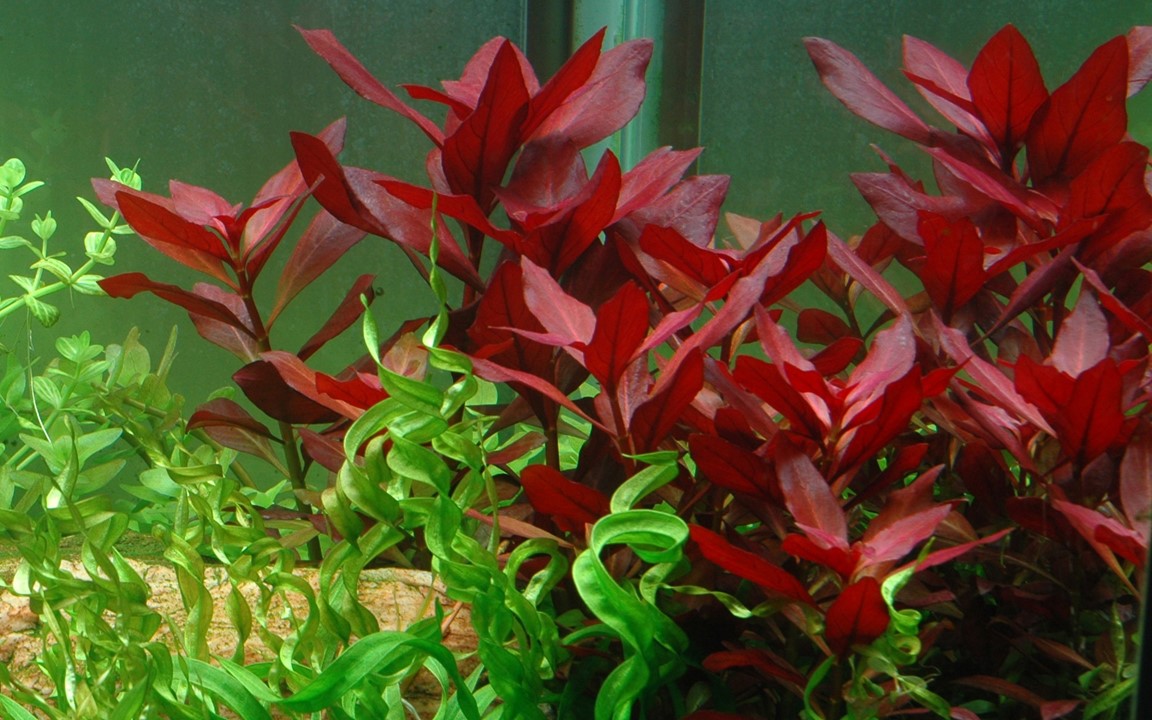Discover the secrets to successfully growing Ludwigia Repens Rubin and create a vibrant aquatic environment in your home aquarium.
Understanding Ludwigia Repens Rubin
Ludwigia Repens Rubin is a popular aquatic plant known for its striking dark red leaves. It is a species of Ludwigia, which is native to North and Central America. The Rubin variety is highly sought after by aquarium enthusiasts due to its striking appearance.
To understand Ludwigia Repens Rubin better, it's important to know about its growth habits. This plant is a stem plant, meaning it grows vertically and requires regular pruning to maintain its shape. It can reach a height of 12-20 inches, making it a great background plant for your aquarium. Provide excellent color contrast among your aquascape.
In terms of care, Ludwigia Repens Rubin prefers slightly acidic to neutral water conditions with a pH range of 6.0 to 7.5. It thrives in moderate to high lighting conditions and benefits from the addition of CO2. With the right care and maintenance, you can enjoy the beauty of Ludwigia Repens Rubin in your aquarium.
Setting up the Ideal Environment
To provide the ideal environment for Ludwigia Repens Rubin, you need to ensure that your aquarium meets its specific requirements. Here are some key factors to consider:
1. Substrate: Ludwigia Repens Rubin prefers a nutrient-rich substrate that provides a stable base for its roots. Use a high-quality aquatic soil or gravel enriched with nutrients to promote healthy growth.
2. Lighting: This plant requires moderate to high lighting conditions to thrive. Invest in a good quality aquarium light that provides the necessary spectrum and intensity for optimal growth.
3. Water Parameters: Ludwigia Repens Rubin prefers slightly acidic to neutral water conditions with a pH range of 6.0 to 7.5. Maintain a temperature between 72°F and 82°F and ensure good water circulation in the tank.
4. CO2 Injection: While not mandatory, providing CO2 supplementation can greatly enhance the growth and coloration of Ludwigia Repens Rubin. Consider using a CO2 system to provide the necessary carbon dioxide for the plant.
By setting up the ideal environment, you can create a conducive space for Ludwigia Repens Rubin to thrive and showcase its vibrant colors.
Water and Lighting Requirements
Proper water and lighting conditions are crucial for the successful growth of Ludwigia Repens Rubin. Here's what you need to know:
1. Lighting: Ludwigia Repens Rubin requires moderate to high lighting conditions to promote healthy growth and vibrant coloration. Use a full-spectrum aquarium light with a color temperature of around 6500K for optimal results.
2. Water Parameters: This plant prefers slightly acidic to neutral water conditions with a pH range of 6.0 to 7.5. Maintain a temperature between 72°F and 82°F, and ensure good water circulation in the tank.
3. Nutrient Requirements: Ludwigia Repens Rubin benefits from a nutrient-rich substrate. Consider adding root tabs or liquid fertilizers specifically formulated for aquatic plants to provide essential nutrients.
4. CO2 Injection: While not mandatory, providing CO2 supplementation can greatly enhance the growth and coloration of Ludwigia Repens Rubin. A CO2 system can help supply the necessary carbon dioxide for the plant's photosynthesis process.
By meeting the water and lighting requirements of Ludwigia Repens Rubin, you can ensure its healthy growth and vibrant appearance in your aquarium.
Proper Care and Maintenance
Proper care and maintenance are essential for the long-term health and vitality of Ludwigia Repens Rubin. Here are some tips to help you ensure its well-being:
1. Pruning: Ludwigia Repens Rubin is a stem plant that tends to grow vertically. Regular pruning is necessary to maintain its shape and prevent it from overshadowing other plants in the aquarium. Trim the stems with sharp scissors, removing any excess growth.
2. Nutrient Supplementation: While Ludwigia Repens Rubin benefits from a nutrient-rich substrate, it may still require additional supplementation. Consider using liquid fertilizers or root tabs formulated for aquatic plants to provide essential nutrients.
3. CO2 Injection: Providing CO2 supplementation can greatly enhance the growth and coloration of Ludwigia Repens Rubin. Monitor the CO2 levels in your aquarium and adjust accordingly to ensure optimal growth and vibrant colors.
4. Water Changes: Regular water changes are important to maintain water quality and remove any accumulated toxins or excess nutrients. Aim for weekly water changes of around 20-30% to keep the aquarium environment clean and healthy.
By following these care and maintenance practices, you can ensure the long-term health and beauty of Ludwigia Repens Rubin in your aquarium.
Propagation Techniques
Propagation is a great way to expand your Ludwigia Repens Rubin collection or share it with other aquarium enthusiasts. Here are some common propagation techniques:
1. Stem Cuttings: Ludwigia Repens Rubin can be easily propagated through stem cuttings. Simply cut a healthy stem at the desired length, remove any lower leaves, and plant it in the substrate. Ensure that the cutting has enough light and nutrients for successful rooting.
2. Side Shoots: Another method of propagation is through side shoots or lateral growth. Allow Ludwigia Repens Rubin to develop side shoots, which can be carefully separated from the main plant and replanted in the substrate.
3. Emersed Growth: Ludwigia Repens Rubin can also be propagated through emersed growth. Place the plant in a container with moist soil or a humidity dome, and provide it with sufficient light and warmth. After a while, new shoots will emerge, which can be transplanted into your aquarium.
By utilizing these propagation techniques, you can easily multiply your Ludwigia Repens Rubin plants and create a lush and vibrant aquatic display. Ludwigia Repens
You may also like another variant Ludwigia Repens Dark Red



.jpg?width=352&name=Ludwigia%20Repens%20In%20Tank%20ss%20(1).jpg)

Leave a Comment